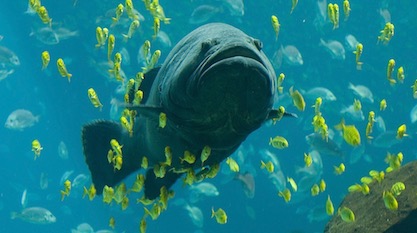 Evolution
Evolution
 Intelligent Design
Intelligent Design
Who Was Ludwig von Bertalanffy and Why Does He Matter?


Editor’s note: This essay is adapted from an article by Michael Flannery, “Toward a New Evolutionary Synthesis,” in the journal Theoretical Biology Forum. Professor Flannery’s new book is Nature’s Prophet: Alfred Russel Wallace and His Evolution from Natural Selection to Natural Theology.
If his name is not immediately recognizable, don’t worry. Mark Davidson, author of Bertalanffy’s 1983 biography, Uncommon Sense, calls him “the least known intellectual titan of the twentieth century.” Bertalanffy was a German biologist who is still recognized for the growth equation presented in 1934 that bears his name, an important means of determining growth patterns in most fish species and an essential tool in the management of fisheries. But perhaps more significantly Bertalanffy devoted most of his career to General System Theory (GST), a holistic approach to examining and even predicting the behavior of systems, something he hoped could be developed into a transdisciplinary specialty. It is based upon an open systems model of hierarchies (holons in Arthur Koestler’s favored usage) that is at once informational and non-reductionist.
Against Reductionism
Bertalanffy’s obscurity is perhaps a reflection of the difficulty in categorizing his positions and ideas. Although he was good friends with Joseph Henry Woodger, he supported only Woodger’s call for a unified empirically based theory in biology and unified science. He did not follow down the path of Woodger’s positivism. Instead, Bertalanffy was careful to distinguish types of complexities as more than mere quantitative measures and appreciated the subtleties and sophistication of nature. He espoused evolutionary descent and diversity, but opposed reductionist views that living organisms can be completely explained by physics and chemistry or that human behavior can be completely reduced to biology. The difference between animal and human complexity, between biological life and human artifice, is plain: “the repertoire of a rat is much greater than that of a robot and much less than that of a human.”
While proponents and opponents of the neo-Darwinian synthesis (NDS) continue to debate, Bertalanffy had made up his mind long ago: NDS had done plenty, but none of it amounted to an all-sufficient account of biological life; in 1968 he complained at the famous Alpbach Symposium that being “pro-selectionist” had little to do with science and instead meant “swallowing a pseudo-religious or political dogma hook, line, and sinker.” He noted the changes brought about by NDS — the replacement of pangenesis with genetic mutation as the basis of heredity, differential reproduction supplanting “survival of the fittest” in a process of continuous change in population genetics — although he emphasized the one thing that had not changed was Darwin’s reliance upon chance and the “essentially accidental nature of evolution.” A solution could be found neither in the “muddy mysticism” of Teilhard de Chardin’s vitalism nor in the Darwinian components of the modern synthesis:
I think the fact that a theory [NDS] so vague, so insufficiently verifiable and so far from the criteria otherwise applied in “hard” science, has become a dogma, can only be explained on sociological grounds. Society and science have been so steeped in the ideas of mechanism, utilitarianism and the economic concept of free competition, that instead of God, Selection was enthroned as ultimate reality.
He was loath to follow such doctrinaire politics masquerading as science. For Bertalanffy, the key to understanding life was in appreciating them not as machine-like mechanisms but as open, steady-state (i.e. continuous in- and out-flows maintaining self-sustaining life and homeostasis) systems of organization recognized holistically, dynamically, and teleologically.
Organismic-Systems Biology — A New Approach
Bertalanffy believed GST could be applied in many areas besides biology — in sociology, psychology, anthropology, the arts and humanities. Many believe it remains as pertinent and powerful as when Bertalanffy proposed it more than sixty years ago. His entirely new approach to the life sciences is our concern here. This is found in his organismic-systems biology (OSB). Bertalanffy believed that organisms were goal-directed systems, and in that sense teleology was an inherent part of nature. But he rejected any larger application of goal-directedness and considered vitalism an intellectual dead-end. Instead, he developed OSB as an answer to vitalism’s “sterility” and the “dogmatic nothing-but-ism” of the mechanistic neo-Darwinian synthesis. Nevertheless, his wife Maria admitted that her husband did have “a feeling of something higher, something beyond this world. Though it’s hard for me to express,” she said in an interview, “I can tell you that he did believe in something. I mean, he believed there is something. We often talked about it, because it was a belief we shared.”
More importantly, Bertalanffy opposed Darwin’s view of human/animal continuity, and he deeply influenced evolutionary biologist Charles E. Oxnard who, like Alfred Russel Wallace a century earlier, argues in Uniqueness and Diversity in Human Evolution (1975) and The Order of Man (1984) that Homo sapiens developed along a separate and unique anatomical and mental path. Life may be governed by so-called “laws of nature” but human exceptionalism freed us from the tyranny of natural selection through choice and understanding that natural laws are all part of synergistic systems that can be studied and at least partially mastered.
Similar work contemporaneous with Bertalanffy should not be ignored either. Here the pioneer research of Nicolas Rashevsky (1899-1972) in theoretical and mathematical biology is of considerable interest. His research into “organismic sets” would be furthered by his protégé Robert Rosen (1934-1998). Bertalanffy’s systems-based approach continued under George Klir (1932-2016), and is carried on today by Dr. Richard Sternberg, now at Biologic Institute, who studied under Klir at Binghamton University.
Bertalanffy, however, is only one side of the new evolutionary synthesis coin. Forming a firm philosophical foundation for these views is John Elof Boodin, the subject of a post tomorrow.
Photo: Golden trevally accompany a giant grouper in the Georgia Aquarium. “Von Bertalanffy growth curves were…calculated for the species,” according to Wikipedia. By Diliff [GFDL, CC-BY-SA-3.0 or CC BY 2.5 ], from Wikimedia Commons.
